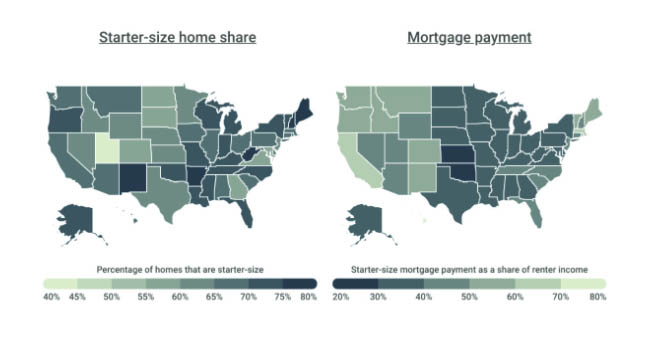By: Mike LaFirenza
The American dream of homeownership often begins with a starter home—a manageable property that allows young adults and families to establish roots, build equity, and lay the groundwork for fi nancial security. This initial step on the property ladder fuels the housing market and strengthens the economy by creating a generation of invested homeowners. However, finding an affordable starter home has become increasingly challenging in recent times. With
historically low inventory and major affordability hurdles, homeownership in the U.S. has become an uphill battle.
Although recent market trends have presented significant challenges, the issue of housing affordability has persisted in the U.S. for decades. A primary contributing factor is the disparity between the rate of growth in home values and household incomes. Between 2000 and 2022, the median home value surged by 59.1% after adjusting for inflation, whereas the median household income saw a modest increase of just 4.5% during the same timeframe.
The right construction software will help speed up your next job. Read our guide on the best construction project management software, as well as our estimating software and takeoff software reviews.
Supply has been another constraint or fi rst-time homebuyers. The U.S. faces a shortage of housing overall, but builders are also building fewer of the smaller, more affordable homes they used to. One- or two-bedroom homes represented 24% of single-family homes built in the mid-1980s, but just 5% in 2022. Over the same span, the share of new homes with four or more bedrooms grew from 19% to 53%. Whether you are a homeowner or a general contractor, finding a reliable builders risk insurance policy for your next project could save you thousands of dollars.
The declining trend in the construction of starter-size homes—defined here as homes with three or fewer bedrooms—is especially apparent in the northern areas of the Great Plains and Mountain West. Less densely populated than their Northeast or West Coast counterparts, states in these regions all have a below-average share of starter-size homes (compared to the national average of 67.7%). Notably, Utah (41.8%) stands out with the lowest proportion of homes with three or fewer bedrooms, while Rhode Island (78.7%) and West Virginia (76.5%) offer the greatest proportion of smaller homes.









